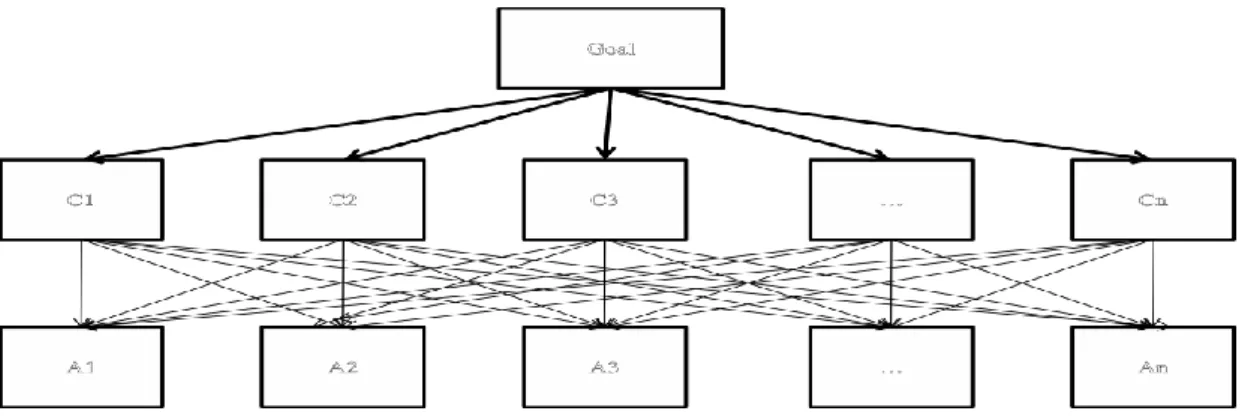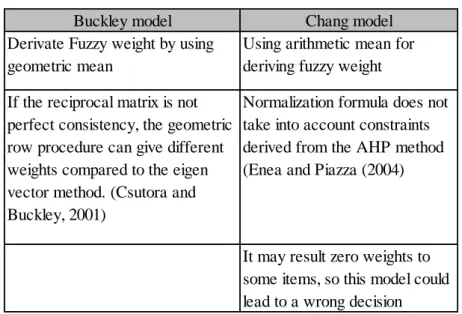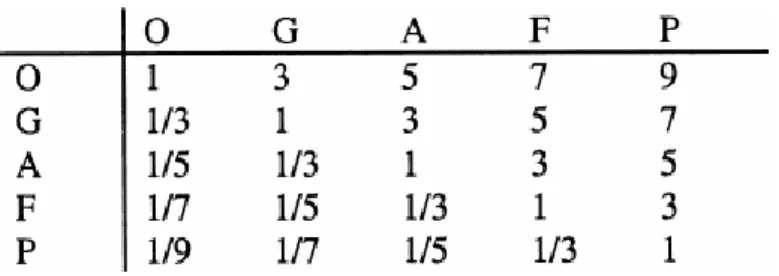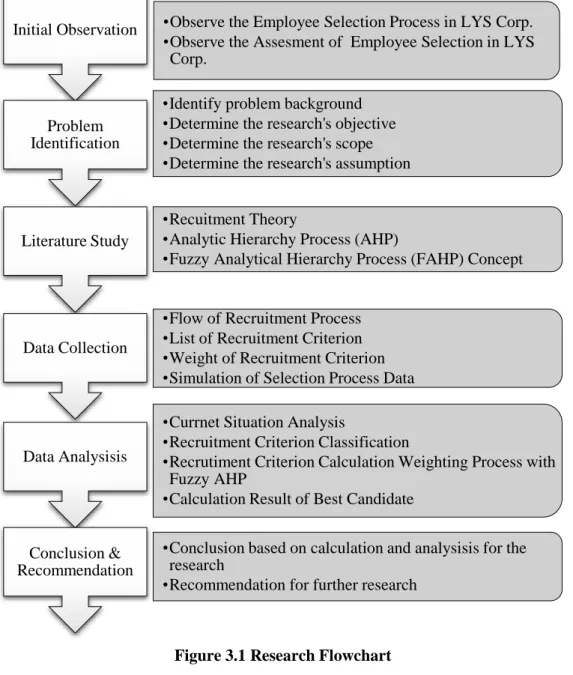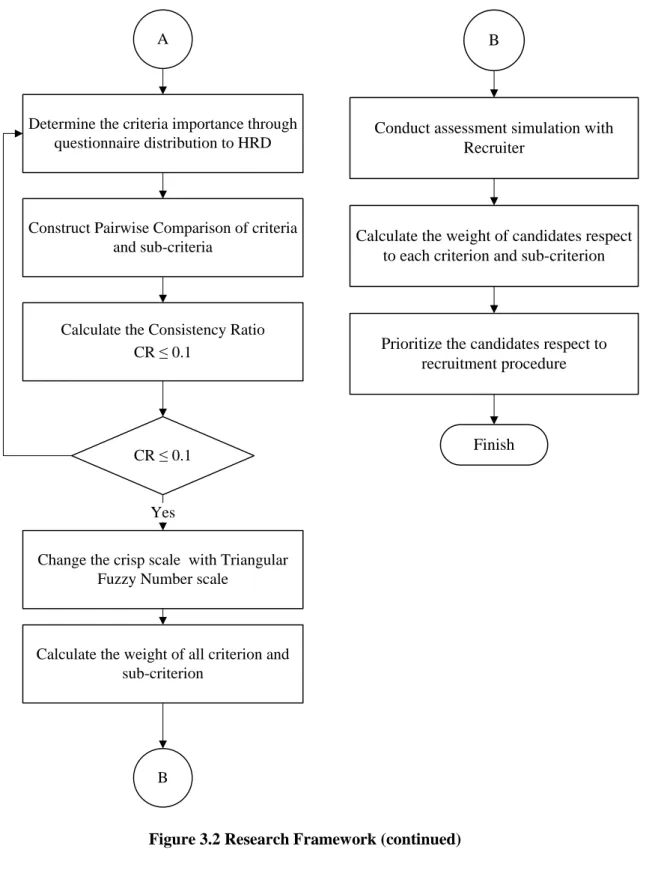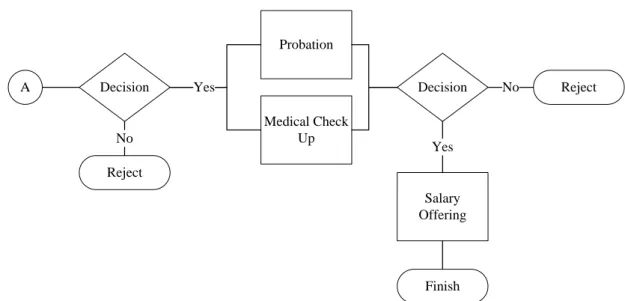This dissertation titled “Application of Fuzzy Analytical Hierarchy Process in Improving Decision Making in Recruitment Process of LYS Corporation” prepared and submitted by Yosafat Sobratu in partial fulfillment of the requirements for the degree of Bachelor Degree in the Faculty of Engineering has been reviewed and found to have met the requirements for a thesis that is suitable for assessment. I declare that this dissertation entitled "Application of Fuzzy Analytical Hierarchy Process in Improving Decision Making in Employee Selection Process of LYS Corporation" is, to the best of my knowledge and belief, an original work that has not been submitted or transferred in whole or in part to any other university to get a degree. Therefore, to improve the employee recruitment and selection issues through the implementation of the Fuzzy Analytical Hierarchy Process method.
On this occasion, I would like to express my gratitude to all the people who have always supported me till the completion of this topic. Thank you for all the guidance, advice and support you have given me during my thesis period and I finally did this thesis. 64 Table 4.34 Final Decision of the Current Recruitment System 64 Table 4.35 Proposed Final Decision of the Recruitment System 65 Table 4.36 Summary of the Solution to the Recruitment Problem 66.
Consistency: conformity in the application of something, usually what is necessary for the sake of logic, accuracy, or fairness. Design Hierarchy: A structure or arrangement of the goal, criteria, subcriteria, and alternatives in the search.
- Problem Background
- Problem Statement
- Objectives
- Scopes and Limitations
- Assumption
- Research Outline
A good recruitment and selection process should have a number of criteria or qualities to evaluate and standardize employees. Based on the mentioned problem, the development and improvement in the evaluation of recruitment criteria will be analyzed in this report. Uncertainty in the matter of the recruitment decision consists of different criteria, often the criteria also have sub-criteria.
How to improve recruitment standards, particularly for criteria, sub-criteria and assessment descriptions of the recruitment and selection process. How to get an appropriate weight of recruitment criterion to reduce uncertainty in decision making. To establish criteria and sub-criteria for the recruitment and selection process that will become the assessment descriptions.
The observation took place from May to December 2016 with the latest conditions for the recruitment and selection process at LYS Corp. The establishment and improvement of recruitment and selection criteria are approved and supported by the Human Resources Department and the Recruitment Coordinator.
Recruitment
- Type of Recruitment
- Purpose of Recruitment
- Common Problem and Requirement in Recruitment Process
- General Recruitment Process
- Recruitment Decision Mechanism
According to Nitisemito (1996), the purpose of the selection process is carried out to get "The right man in the right place". In the selection process, the company must also find the right workforce in the right position. To help improve the success of the selection process by reducing prospective employees who are clearly unqualified or overqualified.
To fulfill its responsibility for social action programs and legal considerations in accordance with the composition of the workforce. Selectors often pay the highest attention to its role, not the physical mind, even the influence of the "halo" effect is difficult to avoid. To mitigate these constraints, discretion required multi-level selection, as more and more levels of selection enabled more rigorous and thorough recruitment.
An interview is an interview conducted by senior managers/supervisors with an applicant to assess potential applicant skills, positions, placements, and tasks to be performed by the applicants, as senior managers/supervisors who will be direct supervisors if the applicant is hired . A matching profile (matching profile) assumes an ideal level of predictor variables that an applicant should have, rather than a minimum level that he or she must achieve or pass.
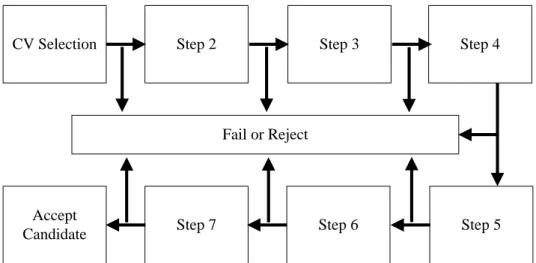
Fuzzy Analytical Hierarchy Process (F-AHP)
- Steps of Fuzzy Analytical Hierarchy Process
Research Flowchart
- Initial Observation
- Problem Identification
- Literature Study
- Data Collection
- Data Calculation and Analysis
- Conclusion and Recommendation
The recruitment process in this company is quite long, the evaluation process takes place in three evaluation steps, and there are also a lot of candidates. The problem was identified when the issue of the recruitment process was discussed with the company's human resources department, specifically the recruitment department. Data is collected through discussion, interview and distribution of questionnaire to people involved in the recruitment process and decision.
This chapter includes the current analysis of the recruitment process, redefining the recruitment criterion, determining the recruitment weight criterion, calculating the recruitment result and comparing the recruitment results. Through the analysis, it was found that some aspects of the current recruitment process are decided subjectively. With the problem identified, this research will redefine the recruitment criteria, descriptions and weights.
In the redetermination process, the proposed recruitment criterion is the evolution of the current recruitment criterion. In addition, some recommendations are given for the future research and better improvement of the recruitment process in LYS Corp.
Research Framework
Data Collection
- Current Flow of Recruitment Process
- Current Recruitment Criterion
- Current Rating System
Problem Identification of Current Recruitment System
Data Calculation
- Re-Determination of Recruitment Criterion and Sub-Criterion
- Construct Pairwise Comparison Matrix of Criterion and Sub-Criterion
- Consistency Determination
- Determination of Criterion and Sub-Criterion Weight
- Construct the Assessment Criterion of each Recruitment Stage
- Description of each Sub-Criterion Determination and Decision Rule . 51
- Candidate Weight Determination
- Final Score of Candidates Calculation
- Decision Making Process
Comparison of Final Decision between Current and Proposed System
Summary of Recruitment Problem Solving
Conclusion
The appropriate weight of each criterion and sub-criterion is calculated by using the Fuzzy Analytical Hierarchy Method. This method helps to calculate the weight of each criterion by including the assessment of 5 respondents in comparing each criterion. The recruitment assessment system can deal with uncertainty and ambiguity in the assessment of the candidates has been helped by using the Fuzzy Analytical Hierarchy Process.
Recommendation
Saphiro, Arnold F., and Koissi, Marie C., Fuzzy Logic Modifications of the Analytic Hierarchy Process – Some Preliminary Observations, Society of Actuaries.
Questions for Data Collection
Weight of Recruitment Criterion Recalculation Form
Weight of Recruitment Criterion Recalculation Form (Filled)
Pairwise Comparison Matrix of Criterion and Sub-Criterion
Consistency Ratio Calculation of Criterion and Sub-Criterion
Weight of Criterions and Sub-Criterions Calculation
Relative fuzzy weight (Wi), mean fuzzy weight value (Mi) and normalized value (Ni) of the criterion. The relative fuzzy weight (Wi), the mean value of the fuzzy weight (Mi) and the normalized value (Ni) of the criterion criteria. The relative fuzzy weight (Wi), the mean value of the fuzzy weight (Mi) and the normalized value (Ni) of the criterion criteria.
Weight of Criterion and Sub Criterion Determination
CV Selection Decision Making
Psychological Test Decision Making
Interview Session Decision Making
Pairwise comparison matrix of criterion at interview session, which is assessed by 2 parties (HR and panel) for position B C5-1.
Probation Stage Decision Making
CV Selection Failed Failed Failed Passed Passed Passed Passed Passed Passed Passed Passed Passed Passed Passed Passed Passed Passed Passed Interview Session Failed Failed Passed Passed Failed Passed Passed. Projects taken C3-2 The number and position of candidates in a certain projects can increase the score of candidate. General Age C1-1 Assessment based on age range requested by user. Gender C1-3 Assessment based on gender requested by user.
Assessment based on the current salary to know the current compensation level and compare it with the organization's offer. Experience Knowledge C3-1 Assessment of the candidate's knowledge of relative positions related to the position being applied for. Planning Ability C6-2 Assessment of candidate's ability to plan work to achieve project goals.
Resourcefulness C6-5 Assessment of the candidate's ability to deal skillfully and quickly with new situations and problems. Analytical and logical C7-6 Assessment of the candidate's ability to analyze the problem and the situation in search of a solution to the problem. The candidate's tenacity in continuing to perform his job is evaluated even when there is a valid reason for resignation.
Assessment based on the responsibility of employees to perform the tasks assigned to them, to perform the tasks required for their work. Assessment based on the candidate's managerial skills in mastering their work to achieve the project goals. Assessment of the candidate's ability to deal competently and quickly with new situations and difficulties.
